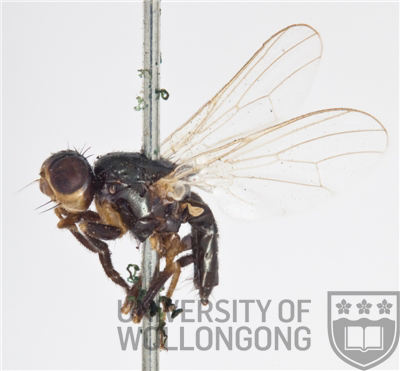Taxonomy
Family: Piophilidae
Subfamily: Piophilinae
Genus: Piophila Fallén 1810
Species: casei (Linnaeus 1758)
The egg, first-, second- and third-instar larvae and the puparium were described by Liu and Greenberg (1989). The third-instar larva has also been described by Sukontason et al. (2001).
Biology
Piophila casei, commonly referred to as the cheese-skipper or bacon fly, is a serious pest in the meat and cheese industries. The larvae have the characteristic escape behaviour of jumping up to 10 centimetres into the air (Smith 1986). They curl into a C-shape and grasp their anal papillae in their mouthparts, then use muscular tension to spring back into their elongated form. Piophilids are typically recorded at carrion during late stages of decomposition,when carcasses are at a drier state. Typically, this period corresponds with a corpse that has been exposed for 3 to 6 months, and high levels of fatty acids and caseic products are present (Smith 2008).
Distribution
This species is one of the few cosmopolitan piophilids. Due to its synanthropic behaviour, P. casei has accompanied humans to nearly all parts of the globe. It is found throughout Australia, although due to its synanthropic behaviour, it is in greatest abundance around human settlements.
Relevant Literature
McAlpine, J.F. (1977) A revised classification of the Piophilidae, including 'Neottiophilidae' and 'Thyreophoridae' (Diptera: Schizophora). Memoirs of the Entomological Society of Canada 109, 1-66.
Smith, K.G.V. (1986) A manual of
forensic entomology, Ithaca, New York, Cornell
University Press.
Sukontason, K.L., Sukontason, K., Piangjai, S.,
Choochote, W., Vogtsberger, R. and Olson, J.K. (2001)
Scanning electron microscopy of the third-instar
Piophila casei
(Diptera:
Piophilidae), a fly species of forensic
importance. Journal
of Medical Entomology 38, 756-759.
